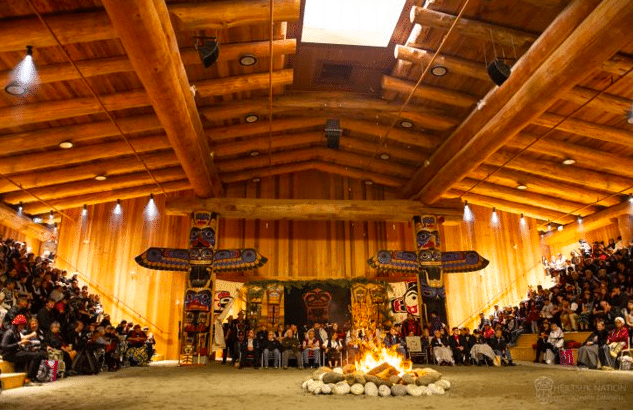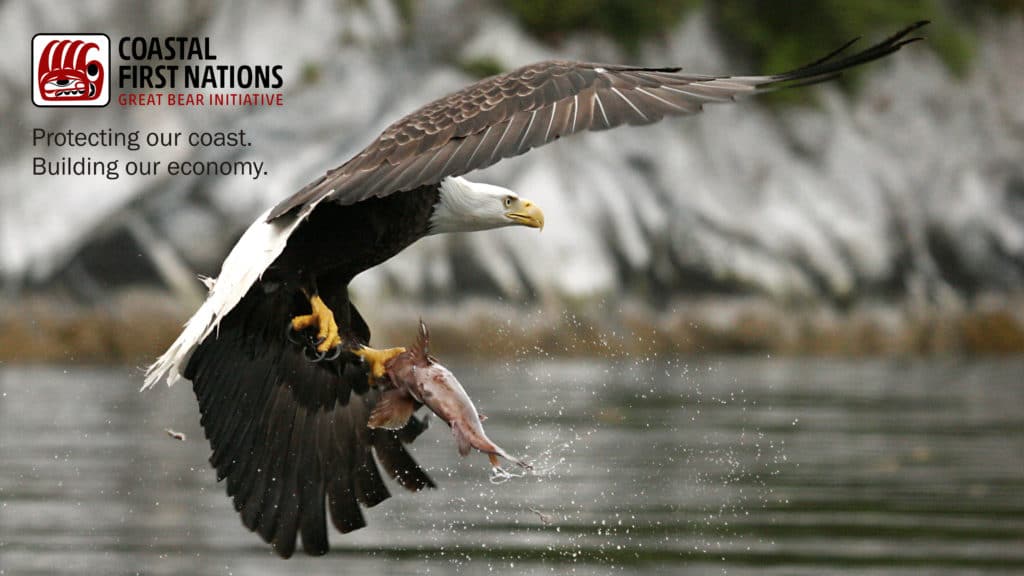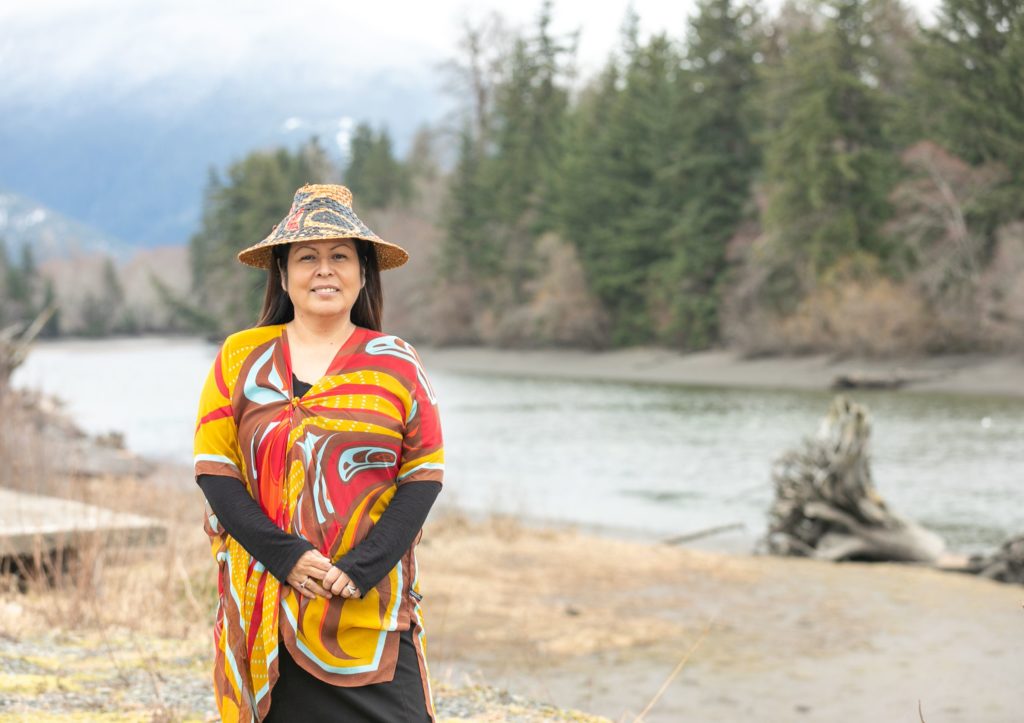
Located on Canada’s Pacific Coast, an alliance of First Nations is working to protect the ecosystems of an area that holds one quarter of the remaining coastal temperate rainforest left on the planet, known as the Great Bear Rainforest.
Coastal First Nations – Great Bear Initiative, or CFN as it’s referred to, was established about 20 years ago, so that the communities of Wuikinuxv, Heiltsuk, Kitasoo/Xai’xais, Nuxalk, Metlakatla, Gitga’at, Gitxaala, Old Massett, Skidegate, and Council of the Haida Nation could grow a sustainable coastal economy together.
The region has been the traditional territories of these communities for the last 14,000 years. They have carefully managed the abundance of natural resources of both land and sea, but over the last 150 years these ecosystems have been threatened by pulp mills, saw mills, logging, canneries and mining, among other extractive processes.
“We are deeply connected to our territories in these magnificent forests and oceans,” explains Christine Smith-Martin, who became CFN’s Executive Director early in 2021, “so we decided to come together with our communities and to share these values with the rest of the world.”

Christine’s own journey to leadership of this alliance began early, as she sat, age five, listening – and colouring – in the community meetings her father took her too. Her professional life has seen her work in Indigenous rights and justice, salmon conservation and renewable energy before coming back to her roots – championing the vital work happening across the CFN communities and creating opportunities for partners to support them. “My dad always used to say that you need to speak in both worlds,” she says. “It’s as important to be involved in the community as it is to meet with big corporations, and it’s a gift to be able to marry these two things.”

Christine Smith-Martin on community, culture and conservation of the Great Bear Rainforest – for all our futures.
You can see in the ocean and the tides the ways that we are being deeply impacted in all of our communities by the climate and biodiversity crisis.
The salmon is in steep decline – down by 80-90% in some of our communities. This affects the bears or eagles that eat them, and it is also the main staple of our own diet. Our traditional foods include a winter supply of jarred and smoked salmon, but it’s getting harder and harder to sustain ourselves: we’re having to wait a lot longer and have less food to preserve.
It feels daunting out there, facing the climate crisis – but it’s exciting that people are finally listening to the things that we’ve been talking about for quite some time. We have an opportunity to talk about the last intact temperate rainforest on earth, and how we can protect that.
Our CFN alliance brings many environmental benefits. One of the biggest is that in each of our communities we have stewardship offices withGuardian Watchmen programs. These Guardian Watchmen programs, which protect and keep people safe on our traditional waters, have essentially replaced the role of theDepartment of Fisheries and Oceans (DFO).
Our guardians are out on the ocean using a wonderful app called Coast Trackers that we have developed. They can track anything: salmon, whales or even garbage – we do garbage clean-ups, and each of our communities can track where the debris is coming from.
We are right there on the water, gathering real-time data – and we can make a massive difference with this information. For example, we shared our information with the DFO to explain why they couldn’t open up a particular area to fishing, because stocks are at a 95% decrease.
I find so much motivation and inspiration from the work happening in our communities: it’s cutting edge. Nobody else is doing work in the coastal region to collect, use and share information with partners in a way that invokes change in policy.
As First Nations communities, we have to think outside the box. That’s what really excites me about joining Coastal First Nations, my role in supporting and promoting Indigenous Coastal innovation.

My dad was great. He worked in our First Nations community as a band administrator. From the age of about five, I sat in on a lot of the meetings, and at the age of nine, he made me make some speeches on his behalf because his arthritis started getting really bad.
Looking back, I realise my father was preparing me for my journey and for a leadership role from a very early age. He also made sure that we went out and got educated.
I had seen my parents be innovative in the work that they did, which allowed me to be innovative too. After my education, I joined the Vancouver Aboriginal Transformative Justice Services and worked my way up over 20 years to the Executive Director role.

Opening of Haíɫzaqv λiác̓i – Heiltsuk Bighouse
I’m excited to bring my cultural leadership to this role. I’m a very cultural traditional person and I am a community minded person. I lead a cultural dance group and I’m constantly finding ways to be connected to my community where I grew up and to my mother’s Haida community as well. It’s a really important piece – perhaps the most important – of what I bring.
I’m always thinking creatively about ways that we can connect what we’re doing to others, whether it’s a big organisation, government or philanthropy. I believe that they all have an interest in preserving this beautiful territory.
Each of our communities is different: we don’t have cookie cutter communities. I take my hat off to them, because they are the innovators. They are choosing partners, talking about what needs to happen, creating research projects and deciding what information to gather.
We’ve always led the way within our own communities but now we have the ability to challenge and change policies. It’s such an exciting place to be, in the driver’s seat of that information.
One of the biggest challenges in developing conservation-based economies in a meaningful way is connectivity. For example, one of our communities has an amazing cannery, with great opportunities, but we need excellent internet connectivity to compete on an equal playing field – digital equity. In one community, Heiltsuk Nation in Bella Bella, they run a highly sophisticated fish plant that sells incredible product to Japan and it can take 45-minutes just to upload a purchase order.
The Connected Coast program will help us compete, and resolve delays, through improved connectivity – this can boost seafood sales for example.
A lot of our communities are developing businesses based on our values – not extracting, but preserving. The Heiltsuk community has a roe-on-kelp business that is really important to them and Kitasoo/Xaixais have businesses based on bear-watching rather than bear-hunting.
We really value everything that is within our ocean or in our forests. We have such a deep connection with non-human species: a lot of our tribes and our clans are based on them. That flows out in the stewardship programs that we have, it really is about their protection.

Our communities are very thoughtful about development, because they have managed these lands for the last 14,000 years. Each of our communities has drawn up their own land use plans, working with their elders, the knowledge keepers, and chosen experts. They know if there are clam beds or a particular bee species there which dictates where development can and can’t take place.
There’s so much to feel good about with all that our communities are doing on everybody’s behalf. TheGreat Bear Carbon Credit Corporation sells carbon credits that support and sustain this really important work.
Our carbon credits are a good way to give back, to support the Coastal First Nations to be out there on your behalf, and to contribute to ensuring that this temperate rainforest is protected. From the carbon credits that we sell, 97% of the money goes to the communities to fund stewardship programs.
It’s always been our responsibility to take care of our traditional territories. Programs like the Guardian Watchman are an extension of that, and the work is funded by our carbon credits.
I think we’re the only First Nations carbon credit program and I don’t know any other that has the return that we do – where you can see the people out on the waters, see the stewardship and see the amazing work that we’re doing out there.
We are interested in establishing relationships with companies and organisations that are aligned with our values to help us do this work. We really want to partner with corporations because we can bring excellent added value. There’s nobody else doing the work that we’re doing in our communities – it is such an amazing opportunity.
Meet Christine at Fixing the Future: Nature Talks, our online series with nature’s champions and defenders:
AtlasAction ► Could you partner with Coastal First Nations? Contact the Great Bear Carbon Credit Corporation and sign up for the CFN newsletter to follow the work of these communities. Christine Smith-Martin was in conversation with Cathy Runciman, co-founder of Atlas of the Future.

